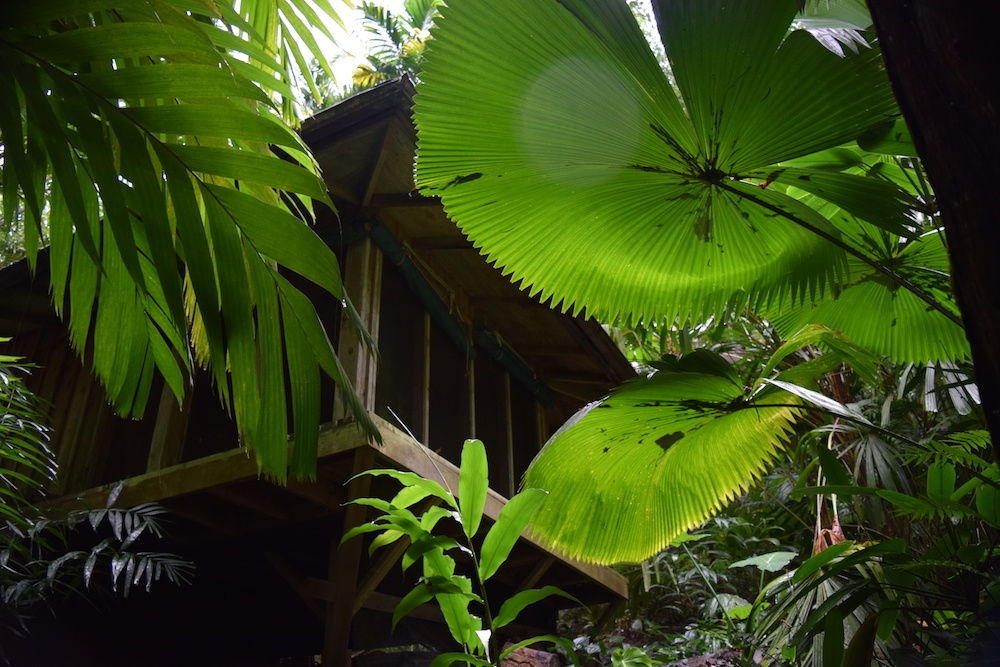
Native to Malaysia and, and southern Thailand, the Licuala peltata var. sumawongii is an understory “dwarf” fan palm found in humid valleys and ravines. A solitary, moderately sized palm with short trunk, this palm holds 12-15 huge, flat, undivided dark green leaves that can measure over 4 feet across. It has prickly petioles. It is best suited to a sheltered position, out of the wind. This palm’s nearly completely circular, pleated, deep green leaves are so geometric in shape, they barely seem real.
Usually, botanists distinguish two varieties of this species, the Licuala peltata var. peltata, with a divided leaf, and the Licuala peltata var. sumawongii, with entire leaf intact. The sumaongii variety is deemed extinct in the wild, but amply cultivated due to the beauty of its foliage and cold hardiness.
Licuala is a genus of palms commonly found in tropical rainforests of southern China, Southeast Asia, the Himalayas, New Guinea and the western Pacific Ocean islands. They are fan palms, with the leaves mostly circular in outline, sometimes undivided but more usually divided into wedge-shaped segments.
The name of the genus “Licuala” comes from the local name “leko wala”, given to these palms in the Maluku Islands of Indonesia; the name of the species comes from the Latin “peltata” meaning armed with a pelta (a small and light shield used for protection). In botany, this term indicates a leaf, usually roundish, having the petiole inserted at the center.
Native people use the leaves of the Licuala peltata in the making of headgear, while the roots are utilized in their traditional medicine as diuretic.
Want to “virtually explore” the Merwin Palm Collection? Search through our archive of Palm Facts of the Week, featuring palms hand-planted by W.S Merwin. To search through the Online Merwin Palm Database, visit this link.
If you’re inspired to help The Merwin Conservancy preserve and care for the world-renowned Merwin Palm Collection into the future, please consider making a tax-deductible donation.
Featured photo by Sara Tekula.

